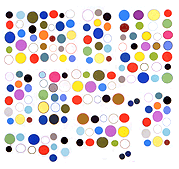![]()
Spotted on YouTube: the above animated GIF. This was mildly significant because although Google allows user-posted GIFs in its G+ social media environment (where the layout makes them look terrible and/or trivial) its own designers use the HTML5, CSS/scripted form of animation for, say, those strutting Thanksgiving turkeys and exploding July 4 fireworks on the main search page. Google Images allows you to search by the GIF filetype but not for animated GIFs. We had a big fight about this last year, where I pointed out the obvious (why not just use a GIF on the front page) and caught hell from the anklebiters.
Not saying that Google doesn't use GIFs elsewhere in its products but this one stuck out enough for someone to notice it and send a screenshot.
The above "dancing Psy" GIF looks different on YouTube and isn't easy to save. That green YT logo is hidden by CSS and the dancing figure appears next to the statistic announcing the video's billion-plus views. To save it you have to use your browser's "inspect element" feature and look for the URL.
hat tips dadayumn, qil, friendster
